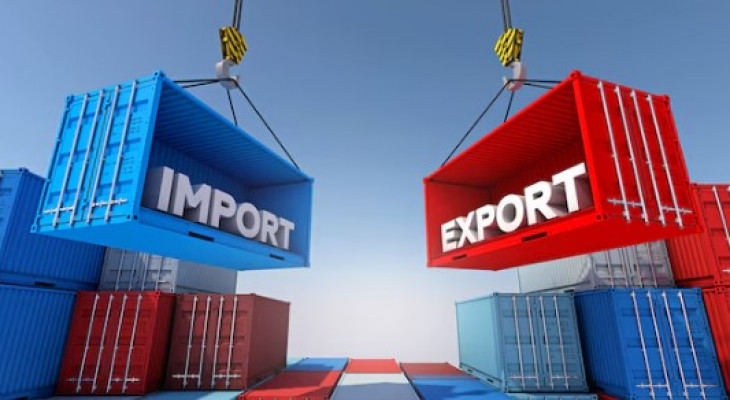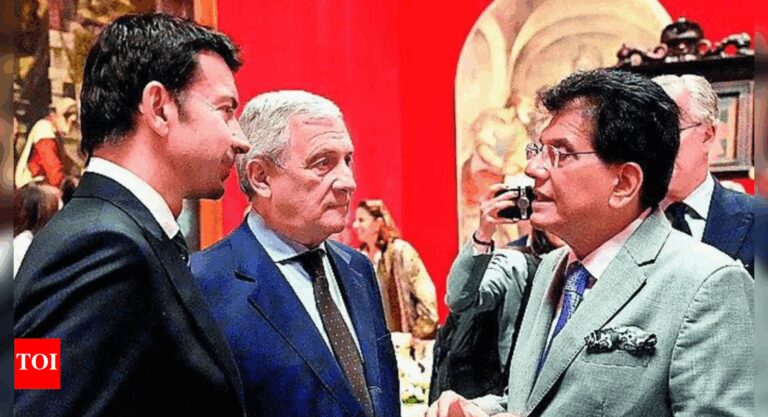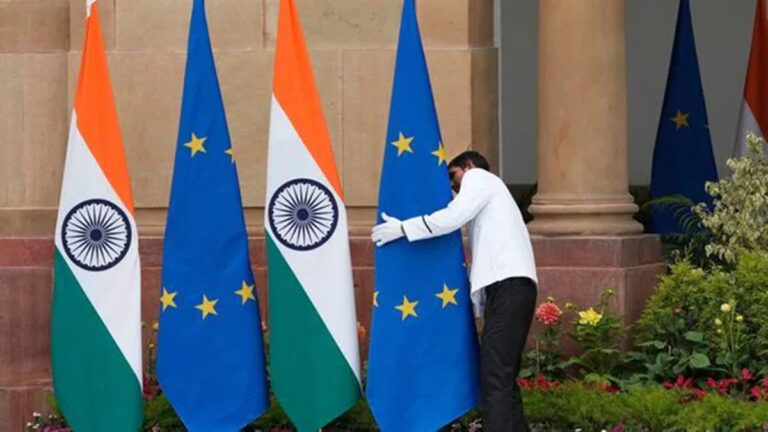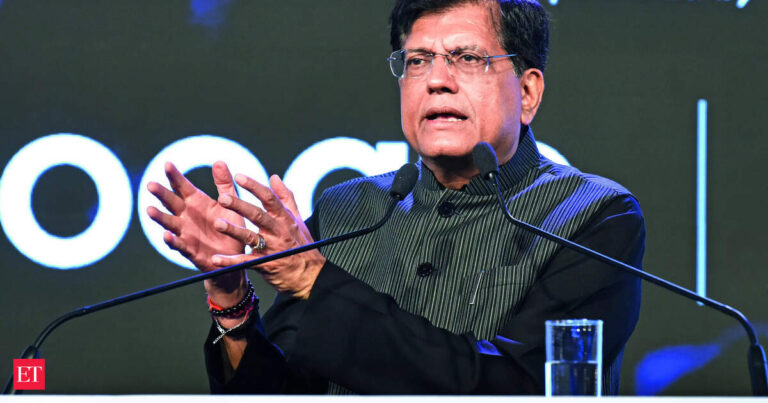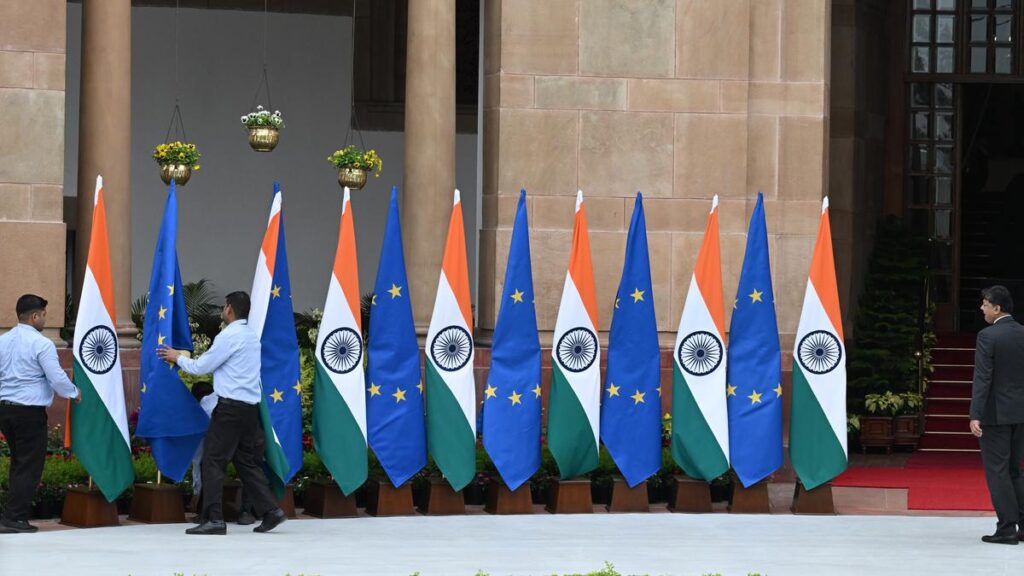
India and the European Union ‘block of 27 countries (EU) will begin the tenth series of negotiations for a free trade agreement proposed from Monday, March 10, 2025) in Brussels in the midst of Trump’s tariff threats, according to an official.
Translections should focus on solving the remaining problems so that the agreement can be finalized by the end of this year.
During the recent visit of the EU Commissioner for Trade and Economic Safety Maros Sefcovic, the two parties discussed means of accelerating efforts to a balanced and mutually beneficial commercial pact.
Prime Minister Narendra Modi and the president of the European Commission Ursula von der Leyen agreed last month to conclude the ambitious Indian-EU free trade agreement this year in the midst of the threat of the Trump administration of higher prices.
“The two parties should hold the tenth series of negotiations for the ALE from March 10 to 14 in Brussels,” said the official.
In June 2022, India and the EU block in 27 countries resumed negotiations after a gap of more than eight years. He stalled in 2013 due to differences on the market opening level. The two parties also negotiate an investment protection agreement and an agreement on geographic indications (GIS).
According to the Think Tank Global Trade Research Initiative (GTRI), the main snack points include agricultural prices, in particular on dairy and wine import rights, car rates and regulatory obstacles affecting products with high intensity of workforce.
India hesitates to reduce automotive import rights and is cautious about to engage in EU demands on sustainability and work standards, he said, adding that the trade in services remains another disputed area, India seeking easier mobility for professionals and recognition of data security under the IMPD framework (General Regulation of Data Protection of the European Union).
“Government purchases, investment protection and environmental regulations such as carbon borders (CBAM) adjustment mechanism (CBAM) still complicate talks. Despite these challenges, a successful agreement could considerably improve bilateral trade, which exceeded $ 190 billion during the year 2024,” said Ajay Srivastava.
India has exported $ 76 billion in goods and $ 30 billion in EU, while the EU exported $ 61.5 billion in goods and $ 23 billion in India.
Agriculture remains a very sensitive area in negotiations, because the EU pushes India to reduce prices on cheese and skimmed powdered milk, which India is currently protecting high tasks to protect its national dairy industry.
Srivastava has also said that the EU’s complex tariff tariff system makes negotiations particularly difficult, as it applies non -ad valorem prices (NAV) on 915 agricultural pricing lines (or product categories), which considerably increase effective work rates on imported products.
“These high pricing structures, combined with strict health and phytosanitary measures (SPS) and technical obstacles to trade (TBT), make Indian agricultural exports difficult to enter the European market. Even if the prices are reduced, he added.
European winegrowers are pushing better access to the Indian market, where imported wines are currently faced at a rate of 150%.
The EU wants that India eliminates or reduces these tasks considerably to 30 to 40%, he said, adding that India could like to match what it offered to Australia as part of Economic Cooperation and the Commercial Agreement (ECTA) of India-Australia, where wines have been reduced to 50% in 10 years.
India and the EU can be willing to eliminate prices on all textiles and clothes from the first day of the implementation of the pact.
Currently, India’s textile exports to EU prices face 12 to 16%, which makes Indian products less competitive than exports from countries such as Bangladesh and Vietnam, which benefit from preferential access to the market under the EU trade agreements.
On the car, Srivastava said that European car manufacturers want India to reduce import duties to fully built vehicles (CBU) to 10 to 20%, down compared to 100 to 125% current.
This would considerably reduce the price of European luxury cars in India, which makes brands like BMW, Mercedes-Benz and Volkswagen more accessible to Indian consumers.
The EU already exports more than $ 2 billion in automobiles and automotive parts to India each year, most of them in completely overturned form (CKD), which faces a 15% price when assembled locally.
However, India’s automotive industry is a major pillar of its economy, representing a third of its manufacturing GDP and employing more than 40 million people.
“The reduction of import duties on CBUs could affect car manufacturers.
If India accepts significant price reductions for the EU, it may have to extend the same advantages to other business partners, reducing incentives for Japanese and Korean car manufacturers to make in India and rather increase direct imports from their country of origin, he added.
A potential common ground can involve a limited number of European cars to enter India at lower prices, he suggested.
Published – March 09, 2025 12:07 IST
